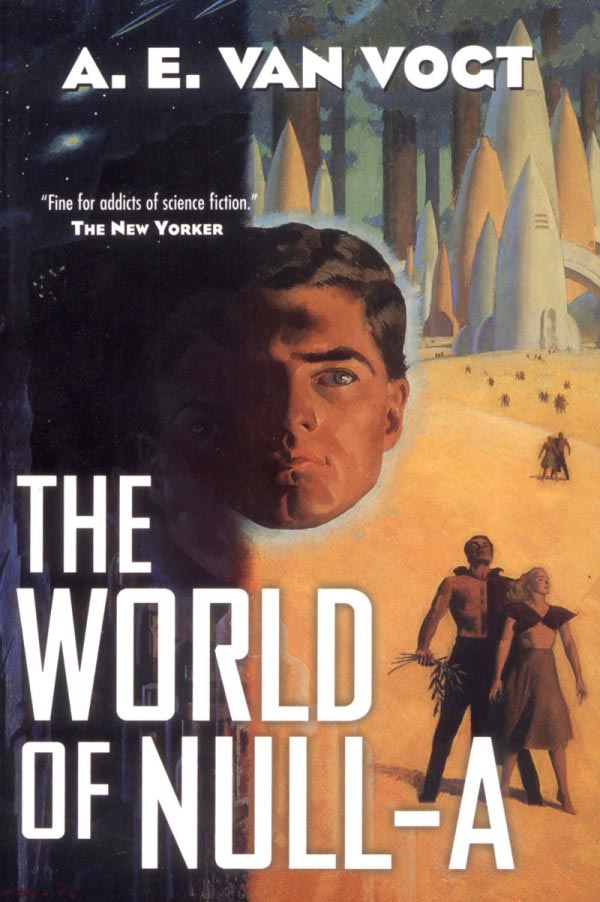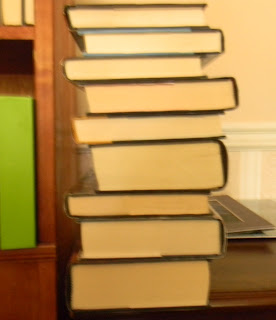In the last 3 years, I've not only helped set up and run the Dealer's Room at Keycon, I've also set up a table for myself to sell some used books.
So over the course of a long life of reading, collecting, buying, selling, and trading books, I have a few observations I'd like to pass on to anyone interested:
What size is the Dealer's Room? How many tables can you devote to booksellers? It's tough to get the 'right mix' of merch. Fans want a variety: books, costuming, games, collectibles, comics, jewellery, anime/manga now a big item. A chainmail artist? An 'armourer'?
If you only have room for 20-25 tables, and 4 tables are already new and used books...and if you have 2 or more New booksellers thinking of setting up, do you take them? Let them compete directly against each other, possibly to the detriment of both? And 2 used booksellers? The potential is there for up to a third of your available table space filled with books. And have the Convention Chairs (your bosses) set a limit ie only 1 table per vendor, or only 2 vendors of the same type allowed?
And then you have 4 jewellers asking for space, and 3 costumers, and your small press publishers selling their own books, and an artist or two wanting to sell directly rather than put a few pieces in the Art Show and maybe go to auction...I've certainly seen any number of fans ignore the book sellers entirely - they are looking for this costume piece or that bit of jewellery, this game/accessory or that collectible action figure. But that's what you get with a con; a mix of fans with a mix of particular interests looking for a mix of merchandise. Which can lead to a mixed up Dealer's room organizer. (Been there, still doing that)
Your major New books
vendor will usually want 2 tables. And what about your used
book dealers - they'll also want 2 tables - books need a lot of room if
you want to display a reasonable selection to browse through.
Of course, the NEW book vendor in the Dealer Room might think of this as competition. But if he is only ordering in a few copies of the author's available works (are they in the warehouse or other stores, can he get them shipped in on time, is he anticipating enough sales from these titles - is the author 'hot' right now- to justify the extra costs, etc), hmmm...
I am considering, as a used book vendor, having a chat with the manager of the store who sets up their table for the convention about this.
We've been fortunate
here in Winnipeg; our author GoHs have almost without fail made a
point of getting through the Dealers room, knowing that the dealers
manning the tables might not be able to leave the table to hit the
autograph line. And as a used book vendor, I for one am so grateful
for the authors to sign my stock of their books. It gives an edge to
add that to my online listing that just might make the sale.
And there is also a question that arises lately: are fans reading?
And WHAT are they reading? SF fans are tech gadget crazy, and you just need to look at the proliferation of smart phones and tablets and all to realize this. And e-book readers. You can fit darn near an entire library on one. In general, ebook sales have been hitting the sales of paper books rather heavily.
Well, fans here do read. I've seen the autograph
lines and they are usually well attended. Book sales in the dealer
room for the GoH's works is usually reasonable; some want the latest
release to get signed, some show up at the used book vendor "hey
what do you have to get signed and then read?" or " I need
a copy of (X), do you have one?"
So, if you've researched your upcoming venue, know your target market, and plan ahead, you can make it work.
But a flea market? Whoa, that's a toughie. A flea market is usually considered to be a multi-family yard sale. Every stall having a wide variety of this, that, and everything..
So if you're a specialty or niche seller, with only one or two product types to move, is it the right venue for you?
I scoped out the flea market I'm in for the month of June. There are a few niche sellers. An anime dealer. A record collector. A comics collectibles dealer. An incense dealer.
Now, the incense dealer also sells a few VHS and DVD movies, and a few accessories for proper use of your incense (or, ahem, other products of the flammable/inhalable variety)
A lot of the vendors had a corner of their stall set aside for used books. Hmmm. Looking at the books I saw that for the most part they were yard sale refugees. Old, battered (with a few exceptions). High in production easy to find anywhere. And usually a tad overpriced.
So I am the only dedicated book vendor there this month. My books are SF/Fantasy, complete trilogies and longer sets, older editions and such. Signed copies, Advance Reading Copies and other more collectible editions.
So I took a chance, a tryout period. At just after the midway point, having finished 3 of the 5 weekends we agreed upon, I'm still about $125 in sales short of breaking even on the month's rental. But I've also interested a lot of people in my book hunting service, and in fact have already filled an order for a new customer who came back the next weekend to collect his book and pay me. (He asked about the book, I told him I'd have it next week. I had it in my storage locker already, but I didn't tell him that - gotta keep the Bear's mystique and reputation flourishing)
We'll see how the last 2 wknds go. The last weekend is our Canada Day long weekend, and on Sunday July 1st there is a HUGE Canada Day street party/festival just down the street a few blocks. We're expecting a lot of foot traffic.
I won't be back in July, however. I'm moving into a new apartment at the beginning of the month and I'll be kinda busy setting up, trying to keep a proper pace that I don't overstress my still-injured and still- recovering feet.
Now, this is NOT to say that a specialty/niche seller can't make it in a flea market setting. BUT, I think it needs some time to set up your clientele base; advertise, get the word out, and as your target clientele gets to know where you are, they should start coming to you. As long as you can hang in long enough to get that ball rolling, you should be able to enjoy modest success.
Again, thanks for sitting in for a spell.



















+ARC.JPG)



